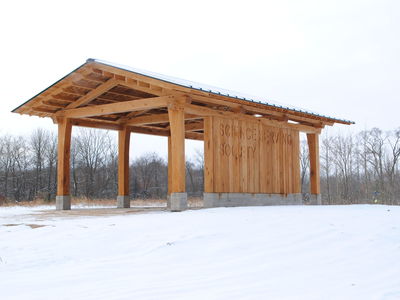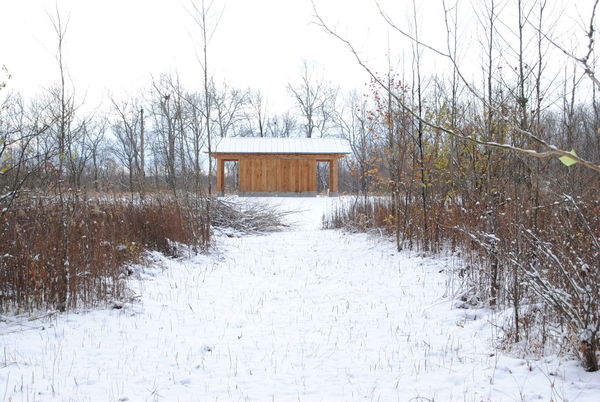
Notre Dame graduate students utilize ND-LEEF to research an effective method for measuring snowfall over space and time
k
Although it may seem simple to calculate, snowfall cannot be well measured by simply placing a yardstick in the ground. In actuality, snow measurement is much more complicated and oftentimes the most accurate snow measurement devices are costly. However, two Notre Dame graduate students are working to improve the snow measurement process in an effective and affordable manner.
Bethany Blakely – a fourth year biological sciences graduate student studying under both Jason McLachlan, associate professor of biological sciences, and Adrian Rocha, assistant professor of biological sciences – and Salvatore Curasi – a second year biological sciences graduate student also studying under Rocha – have created a model that captures the effects that wind, temperature, and vegetation have on snow and how these factors impact the measurement of snowfall over space and time. The research includes the use of temperature sensors developed by Curasi as an undergraduate student to gather the necessary data.
When discussing the use of the sensors, Curasi said, “Conventional snow measurement devices cannot capture the impact different factors have on snowfall, especially over different areas or varying lengths of time. To account for this, we will collect data from the temperature sensors as well as other elements to help us measure snowfall in a way that includes space and time.”
To conduct their research, Blakely and Curasi will utilize the Environmental Change Initiative’s (ECI) Notre Dame Linked Experimental Ecosystem Facility (ND-LEEF). The facility is based in South Bend, Indiana’s St. Joseph County Park and consists of replicated watersheds, shallow groundwater wells, and several acres for terrestrial research. By using ND-LEEF’s forested and grassier areas, the students will be able to gather snowfall data on a variety of vegetation types.

“In the end, we would like to see if we can discover a consistent effect from each different kind of vegetation,” said Blakely. “This could be one of the ways our work could benefit other ecosystem models, including those that are used for climate change and hydrology research.”
As an example, Rocha conducts research on the Alaskan Tundra and studies everything from Arctic climate change to land use change ecology. Part of his work may be impacted by snowfall on the Tundra and could therefore benefit from Blakely and Curasi’s work. “Snow depth and cover plays an important role in wintertime biogeochemical processes that can carry over into the summer months – think increased water availability in summer from snow, and soil insulation during fall months,” said Rocha. “Snow depth and cover can vary widely across the landscape and our inability to understand these processes beyond the scale of a couple tens of meters has been hindered by measurement cost. These affordable sensors allow us to develop a landscape scale understanding of the importance of snow depth and cover on ecosystem biogeochemistry.”
With new intellectual resources, novel infrastructure, and cutting edge tools, ECI provides support to spearhead innovative research. ECI is exploring approaches to help people and ecosystems adapt to climate change, mitigate the effects of land use change, predict species occurrences in a shifting world and improve water quality. To learn more about ECI, please visit environmentalchange.nd.edu.
Contact:
Alex Gumm / Communications & Program Associate
Environmental Change Initiative / University of Notre Dame
agumm@nd.edu / 574.807.9322
environmentalchange.nd.edu / @ND_ECI
About Notre Dame Research:
The University of Notre Dame is a private research and teaching university inspired by its Catholic mission. Located in South Bend, Indiana, its researchers are advancing human understanding through research, scholarship, education, and creative endeavor in order to be a repository for knowledge and a powerful means for doing good in the world. For more information, please see research.nd.edu or @UNDResearch.
Originally published by at research.nd.edu on December 09, 2016.